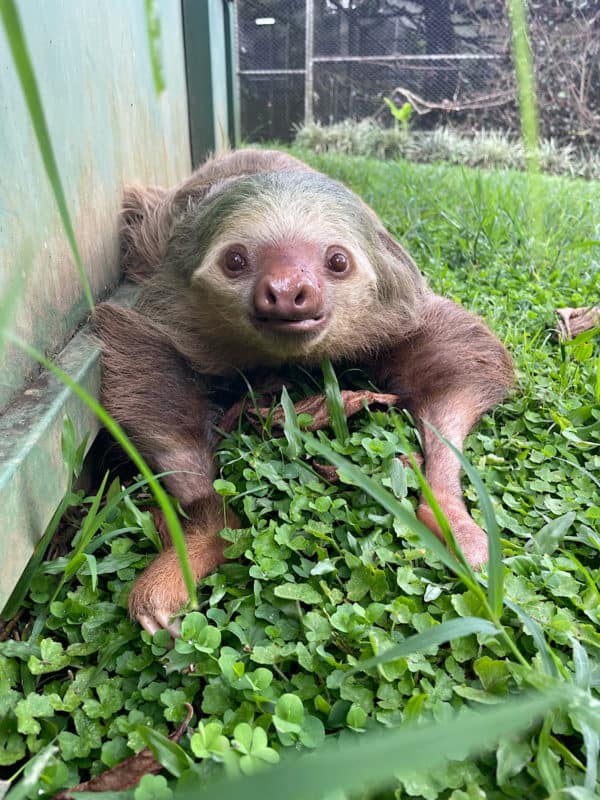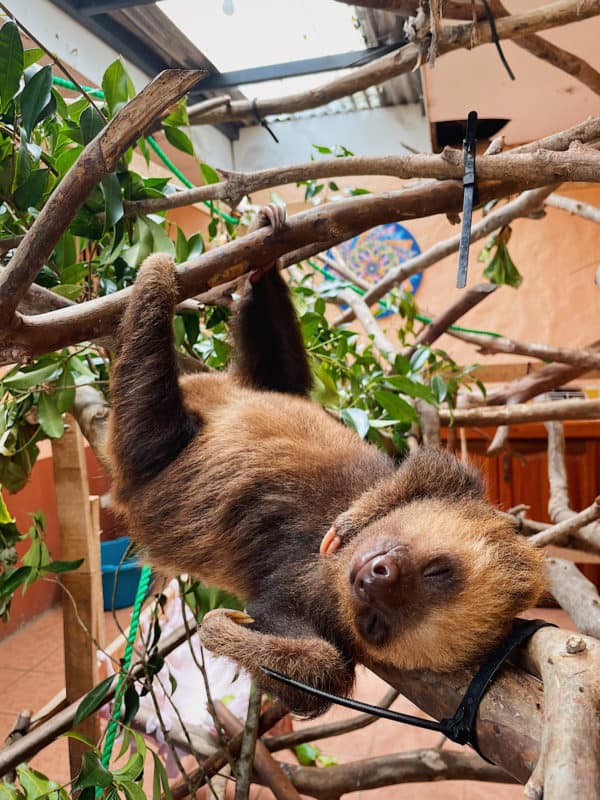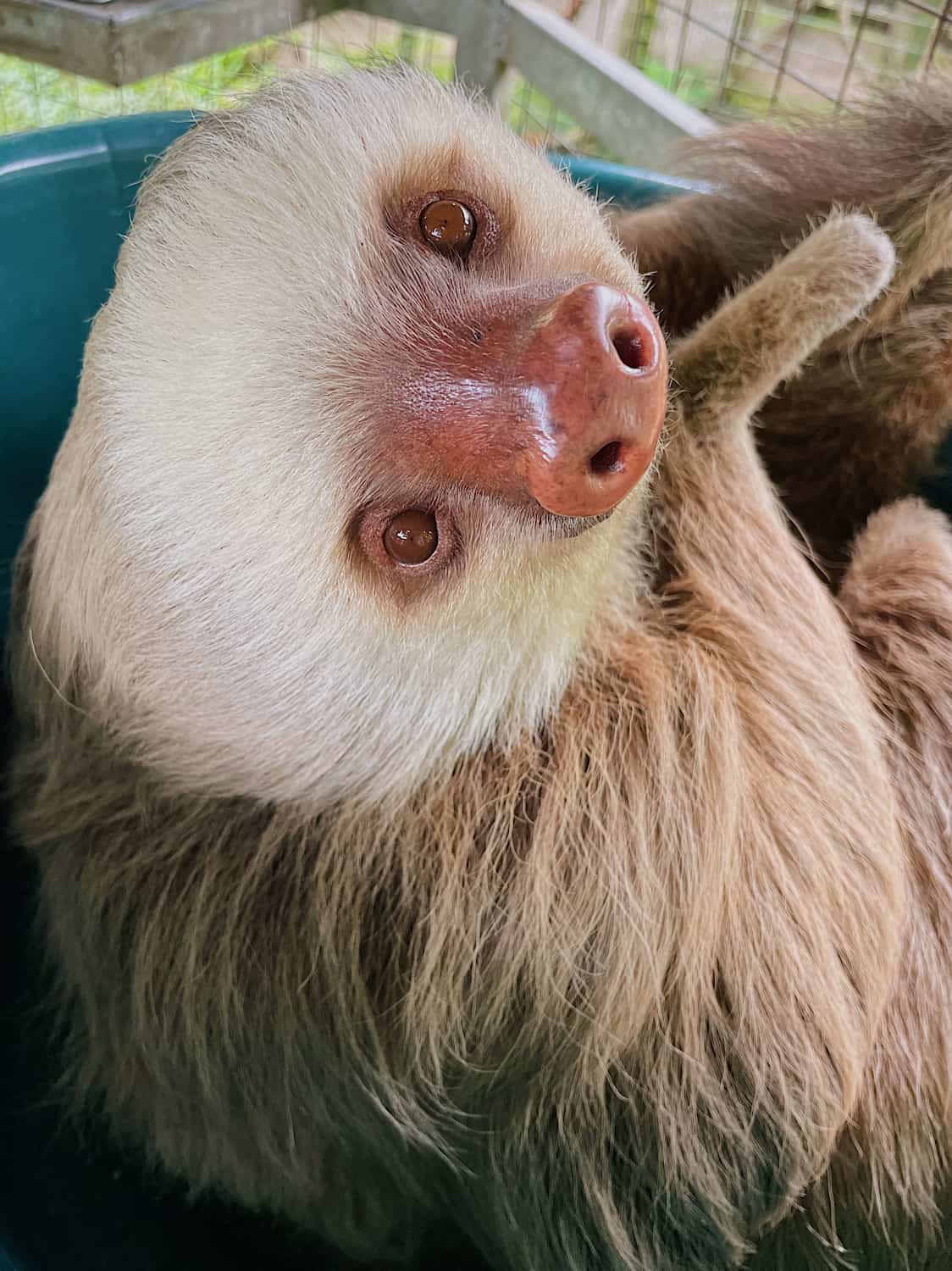How many times have you seen an image of a sloth or a sloth portrayed in media and thought about how cute and cuddly the animal looks? Maybe you even felt a desire to find one and give it a good snuggle; since they are a sloth, which is synonymous with lazy, cute, and cuddly, how much damage could they do?
This is one of the most prevalent misconceptions concerning the reputation of sloths. Although these animals are extremely cute, no one can deny that they are most definitely not as slow and gentle as they may seem.
Two-Fingered sloths, scientifically known as Hoffman’s Two-Toed Sloth (Choloepus hoffmanni), actually have four large pseudo canines (premolars) that they ensure are constantly sharp, by grinding them against each other, to be useful in defense. Not only are these teeth extremely sharp, but a Hoffman’s sloth’s mouth also has been known to contain more bacteria than that of a dog’s mouth. This means that if you were to be so unfortunate as to get bitten, it is extremely probable for the wound to become infected.
Alongside these dangerous teeth, Two-Fingered sloths also have very claw-like fingers that are very sharp and utilized in defense. These claws are strong and sharp, which they use for a quick swipe that can leave visible and painful damage, not to mention that if they were to get your hand in the hold of their hook, they can quickly pull the hand into their mouth.

Questioning your assumption about their cute and cuddliness yet?
Alongside these defense measures, they are also not nearly as sluggish as their reputation would lead you to believe. When a sloth feels vulnerable or stressed, they can move very quickly, whether that is to climb away or counterattack by swiping with their claws and biting, if they get the chance.
The first act of defense would be to hiss, grunt, and swipe at you with their claws. Their strength, and how people tend to underestimate them, makes them a very formidable opponent.
Three-fingered sloths, specifically Brown-throated (Bradypus variegatus), are more commonly portrayed in media due to the coloration on their face painting a constant and near-perfect smile. Despite this smiley outward appearance, they are similarly not as vulnerable as they may seem. Three-Fingered sloths lack the sharp teeth that the Two-fingered sloths boast. Three-fingered sloths have box-like molars to chew with, but they make up for it in sheer strength.
Three-fingered, as per their name, have three toes on their feet and three fingers on their forelimbs; the names of these sloths are a misnomer as all sloths have three claws on their hind limbs, the difference lies specifically in their ‘hands’. Commonly referred to as, Three-Toed or more aptly Three-Fingered, sloths are extremely strong, and it is widely understood that their grip strength with their claws can easily break a persons’ finger.

Together with their strength, they have similarly sharp claws that carry out extensive damage when swiping at their antagonist. Considering these underlying dangers, as someone who works in wildlife rehabilitation, it is always important to consider the risk that animals have.
Alongside this consideration, it is also significant to assess the stress the animal is experiencing. The treatments being performed in our medical clinic are nothing but necessary, but it is important to carry out these treatments as efficiently as possible to maintain the highest achievable animal welfare. Understanding that sloths are not cuddly is not only important for the protection of people but, also for the consideration of the animals’ inherent rights. These sloths do not deserve to experience the levels of stress that occur when being forced to interact with humans unless medically necessary in their rehabilitative process back to freedom.
No matter how cute or cuddly an animal appears to be, it is always best to respect their inherent wild nature; this is not only for your safety but also their continuing wellbeing. As a sloth rehabilitation intern, I promise the thought of cuddling a sloth is not worth the scars you might come away with.
— Jillian Vander Vinne is a Sloth Rehabilitation Intern at Toucan Rescue Ranch.

This article was produced by the Toucan Rescue Ranch, which specializes in helping wild animals recover so that they can be

